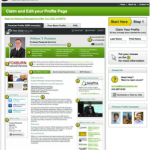We recently conducted a review of a campaign that was underperforming expectations. Our team was contributing elements of the campaign and we were very disappointed in the results. What was going wrong? What were the red flags?
The campaign was focused on marketing a leading technology solution to a target market based on geographic named accounts. The client was following core principles of inbound marketing and digital marketing offering unique premium content for download and involving a number of components:
- Active blog content
- Active Twitter engagement
- PPC Campaign
- Microsite with landing pages aligned to key words
- Relevant copy on each landing page
- A call to action with premium content
- Embedded conversion forms using a leading marketing automation platform
- eMails tailored to each value proposition and landing page
- A direct mail program to a validated list of targets.
The content was solid and the program was being executed carefully with iterative updates to enhance content and offering language. On the surface, everything looked good. So, why was the client getting limited response?
To evaluate the program, we took a commercial end-to-end revenue perspective and looked at the revenue cycle. We divided the campaign into three elements: Top-of-the-funnel (TOFU), Middle-of-the-funnel (MOFU) and Bottom-of-the-funnel (BOFU). We looked for red flags.
Here were our findings:
Overall
- Product revenue performance was good for the business with a concentration on a few large accounts, however the business was not coming from the campaign – rather it was coming from existing customers
- Performance was driven largely by account-based sales efforts
- The value proposition seemed to provide a clear competitive advantage, however no validation had occurred with target customers (a red flag)
- The campaign incorporated many leading digital marketing and inbound practices and partner organizations recognized the program as unique and a stand out among peers.
TOFU- Top of Funnel
- A microsite was of a very high quality with good relevant content & messaging and the team maintained a strong social media presence which was also building increased organic presence
- We found that there was a very small target market– the campaign was targeting a named set of companies of only a few hundred companies (a red flag– was there a broad enough market? If the target market is this focused, why the emphasis no an inbound strategy?)
- A sophisticated PPC Campaign was underway – with a substantial budget (another red flag– why so much investment in PPC with such a targeted audience?)
- Direct mail campaigns also had little or no results or traction
- No other new business lead sources were identified.
MOFU – Middle of the Funnel
- The marketing list had been in place and marketed to for over a year with little or no results. The list was limited in size and consistent with the target company list. The list was validated and augmented, but this remained a major red flag. Was this list ever going to produce results? Was the campaign targeting the right market?
- There was no need for a nurture program and lead scoring had little relevance given such low lead gen results
- Marketing automation was implemented well and while better campaign and email coordination and tracking across campaigns were needed, this did not explain a lack of lead generation within this campaign
- The company was not engaged any consistent telesales (another red flag – especially given the highly targeted nature of the customer audience) Past telesales had mixed results depending on product, firm, timing and message.
BOFU – Bottom of Funnel
- The direct sales teams were successfully closing deals and the existing account base for the organization was the primary source of product revenue
- However, cross-selling the existing account base is difficult with entrenched vendor and sales relationships.
What did the red flags tell us?
The campaign needed to refresh its target universe/ marketing list and expand its exposure while also taking a deeper dive review of the value proposition by conducting a focused survey. Given the target market, budgets needed to shift from the top-of-funnel inbound and PPC lead gen toward more 1:1 tele-prospecting and sales engagement.
By taking a commercial focused approach and mapping the end-to-end revenue cycle from marketing to sales, it became more apparent where to focus attention and make improvements.




